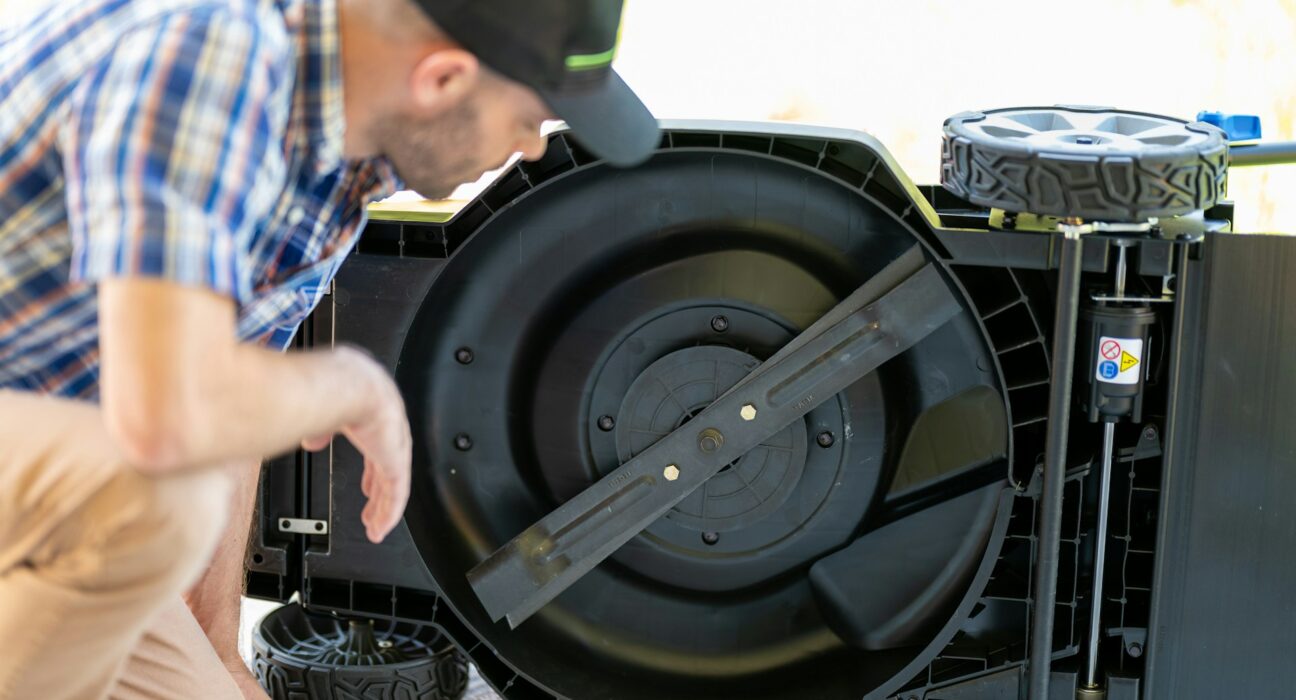Small engines power countless pieces of equipment we depend on daily—lawnmowers, chainsaws, generators, and pressure washers.
When these machines break down, it’s often at the worst possible moment. The good news is that most small engine problems follow predictable patterns and can be diagnosed and fixed with basic tools and knowledge.
Many equipment owners assume engine trouble means expensive professional repairs. In reality, the most common issues stem from simple maintenance oversights or easily replaceable components.
Understanding basic troubleshooting techniques saves time, money, and frustration while keeping your equipment running reliably.
This troubleshooting approach focuses on systematic problem-solving. You’ll learn to identify symptoms, narrow down causes, and implement solutions for the most frequent small engine problems.
Whether you’re dealing with starting issues, performance problems, or operational concerns, these techniques will help you get back to work quickly.
Starting Problems: When Engines Won’t Turn Over
Starting difficulties represent the most common small engine complaints. These problems typically involve fuel delivery, ignition system issues, or mechanical problems that prevent normal engine operation.
Fuel System Troubleshooting
Start with fuel system basics when your engine won’t start. Check for adequate fuel in the tank, ensuring the fuel is fresh and free from contamination. Stale fuel older than 30 days can cause starting problems and should be replaced with fresh gasoline.
Examine the fuel shut-off valve if your equipment has one. This valve must be in the open position for fuel to reach the carburetor. A closed valve is a simple oversight that prevents starting completely.
Prime the engine according to manufacturer instructions. Most small engines need 3-5 primer bulb presses to draw fuel into the carburetor. Over-priming can flood the engine, while under-priming leaves insufficient fuel for ignition.
Ignition System Diagnosis
Remove and inspect the spark plug when fuel system checks don’t resolve starting issues. A wet plug indicates fuel is reaching the combustion chamber, while a dry plug suggests fuel delivery problems.
Clean carbon deposits from the spark plug electrode using a wire brush. Check the gap between electrodes using a feeler gauge—most small engines require a 0.030-inch gap. Adjust by carefully bending the ground electrode.
Test for spark by connecting the plug to the ignition wire and grounding it against the engine block. Pull the starter cord and watch for a strong blue spark. Weak yellow sparks or no spark indicate ignition system problems requiring further investigation.
Compression Issues
Low compression prevents engines from starting even when fuel and ignition systems work correctly. Perform a simple compression test by removing the spark plug and feeling for strong pressure pulses when pulling the starter cord.
Weak compression often results from worn piston rings, damaged valves, or a blown head gasket. These issues typically require professional engine repair to resolve properly.
Performance Problems: When Engines Run But Struggle
Engines that start but run poorly usually have issues with fuel mixture, air flow, or ignition timing. These problems manifest as rough idling, poor acceleration, or inconsistent power output.
Carburetor Adjustment and Cleaning
Carburetor problems cause many performance issues in small engines. Remove the air filter and inspect the carburetor for obvious dirt or debris. Clean the exterior with carburetor cleaner before proceeding with internal cleaning.
Remove the carburetor bowl and clean all passages with a carburetor cleaner. Pay special attention to jets and small orifices where blockages commonly occur. Use compressed air to blow out passages after cleaning.
Adjust the carburetor mixture screws if your engine has them. Turn the screws clockwise until they seat lightly, then back them out 1.5 turns as a starting point. Fine-tune the mixture while the engine runs for optimal performance.
Air Filter Maintenance
Dirty air filters restrict airflow and create rich fuel mixtures that cause poor performance. Remove the air filter and inspect it for dirt, grass clippings, or other debris.
Clean foam filters in warm soapy water, rinse thoroughly and allow them to dry completely. Apply a thin layer of clean engine oil before reinstalling. Replace paper filters when dirty—never attempt to wash paper filter elements.
Fuel Quality Assessment
Poor fuel quality causes many performance problems. Water contamination makes engines run rough and may cause stalling. Drain suspicious fuel and refill with fresh gasoline.
Add fuel stabilizer to prevent future fuel degradation, especially for equipment used seasonally. Stabilizer extends fuel life and prevent gum formation that clogs fuel systems.
Overheating Issues: When Engines Run Too Hot
Overheating quickly damages small engines and must be addressed immediately. These problems usually involve blocked cooling fins, damaged shrouds, or inadequate lubrication.
Cooling System Inspection
Inspect the cooling fins on the cylinder head and block for grass clippings, dirt, or other debris. Use compressed air or a stiff brush to remove blockages and restore proper airflow.
Check that cooling shrouds remain properly installed and undamaged. Missing or damaged shrouds disrupt airflow patterns and cause uneven cooling that leads to overheating.
Oil Level and Quality
Low oil levels cause rapid overheating and engine damage. Check the oil level before each use with the engine cold and on level ground. Add oil if needed, but avoid overfilling.
Change oil regularly according to manufacturer recommendations. Dirty oil loses its lubricating properties and contributes to overheating. Use the correct oil viscosity for your climate and engine type.
Excessive Load Conditions
Operating equipment beyond its designed capacity causes overheating. Reduce load or allow the engine to cool between heavy work periods. Pushing equipment too hard accelerates wear and can cause catastrophic failure.
Idle and Speed Control Problems
Engines that won’t idle properly or have speed control issues typically have carburetor or governor problems. These issues affect equipment usability and can indicate more serious problems.
Governor System Adjustment
The governor system maintains consistent engine speed under varying loads. Linkage problems cause speed hunting, high idle speeds, or inability to maintain proper operating speeds.
Inspect governor linkages for damage, wear, or improper adjustment. Bent linkages affect the governor’s response and must be straightened or replaced. Lubricate pivot points with light oil to ensure smooth operation.
Carburetor Idle Circuit
Idle circuit problems cause engines to stall at low speeds or run rough when not under load. Clean the idle circuit passages carefully using carburetor cleaner and compressed air.
Adjust idle mixture screws if your carburetor has them. Turn the screw clockwise until it seats lightly, then back it out for 1-2 turns. Fine-tune while the engine idles for smooth operation.
Electrical System Troubleshooting
Electrical problems affect starting, charging, and safety systems. These issues often require systematic testing to identify and resolve properly.
Battery and Charging System
Equipment with electric start systems depends on proper battery maintenance. Check battery terminals for corrosion and clean with baking soda and water if needed. Tighten loose connections.
Test battery voltage with a multimeter. Most small engine batteries should read 12.6 volts or higher when fully charged. Charge or replace batteries that test below 12.4 volts.
Safety Switch Testing
Safety switches prevent equipment operation under dangerous conditions. Faulty switches can prevent starting or cause unexpected shutdown during operation.
Test safety switches by bypassing them temporarily during troubleshooting. If the engine starts with switches bypassed, replace the defective switch. Never operate equipment with safety switches permanently disabled.
Preventive Measures: Stopping Problems Before They Start
Regular maintenance prevents most small engine problems and extends equipment life significantly. Establish a routine maintenance schedule based on usage patterns and manufacturer recommendations.
Regular Maintenance Schedule
Perform daily checks before each use, including oil level inspection, air filter condition assessment, and visual equipment inspection. These quick checks prevent major problems and ensure safe operation.
Schedule comprehensive maintenance every 25-50 hours of operation or at least once per season. This includes oil changes, filter replacement, spark plug service, and fuel system cleaning.
Proper Storage Practices
Prepare equipment properly for storage to prevent off-season problems. Add a fuel stabilizer or drain the fuel system completely. Change oil, clean air filters, and store equipment in a dry location.
Remove spark plugs and add a small amount of oil to the cylinder before extended storage. This prevents corrosion and ensures easier starting when equipment returns to service.
Restore Reliable Operation Through Systematic Troubleshooting
Small engine problems often seem complex but usually have straightforward solutions. Systematic troubleshooting identifies root causes and leads to effective repairs. Most issues involve basic maintenance items that any equipment owner can address.
Start with simple checks before moving to complex diagnostics. Fuel quality, air filter condition, and spark plug maintenance resolve many common problems. Build your troubleshooting skills gradually, tackling more complex issues as you gain experience.
Keep basic tools and spare parts on hand for quick repairs. Common items like spark plugs, air filters, and oil make emergency repairs possible without delays. Quality troubleshooting skills keep your equipment running reliably season after season.
For additional maintenance tips and expert advice on keeping your equipment running smoothly, click here to access our comprehensive small engine resource center.







